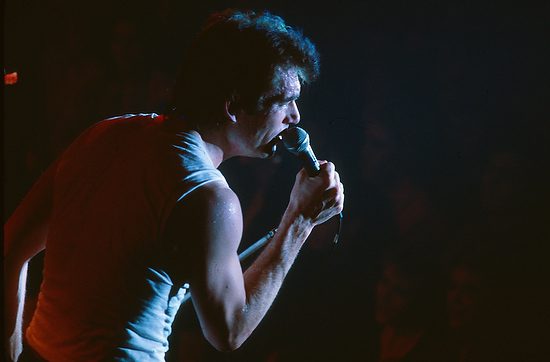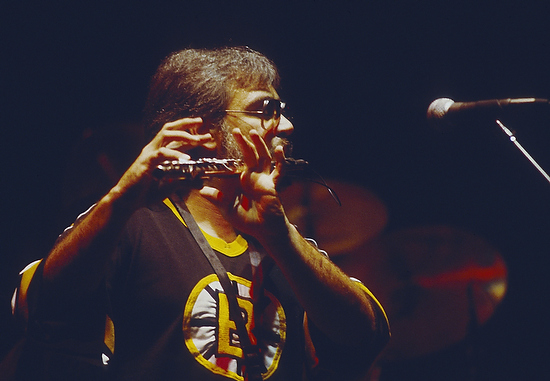Huey Lewis and the News 1982 in Greenville, NC
At least I found ONE photo for the paper
I remember being in the darkroom, looking through my concert photo shoot, and struggling to find one image I could give to the editors.
When I was photographing bands in the 1980s, I was starting this career. Every time I pushed that button, it cost me about 50¢ to 75¢ a photo. The cost depended on if I was shooting black and white, color negative, or color transparency film. It was standard for me to avoid a concert with only a handful of keepers’ images.
The learning curve for me was pretty steep compared to today. You had to wait to see your results.
With film, the time from me taking the photo to see if it was usable was a few hours at best and, usually with color transparency, a couple of weeks.
I should have written down all my camera settings and, when looking at the photos, know what I did, but I didn’t. So I knew the shutter speed was too slow, and my images were not sharp.
The camera’s metering systems were not as sophisticated as today. So getting a good reading on the face of the singer using a spot meter in your camera that we have today was not on those Nikon FM or FM2 cameras I had back then.
I was shooting tungsten color transparency film since tungsten temperature lights lit most stages. I was shooting ISO 160 being pushed to ISO 320. I had a Nikon 80-200mm ƒ/4 lens and got a few usable images back then.
I made a lot of mistakes in those first five years. Sometimes I hunted through contact sheets for just one image that could run in the school paper. I remember a time or two handing in photos that were slightly out of focus or had more motion blur than I should have.
The Attic in Greenville, NC, had a good number of rock bands come through, and since it was such a small venue, the lights were closer, and the light was decent. However, the light wasn’t much better when the school had concerts like the Charlie Daniels Band.
I was getting very few usable images in those days. But, you see, shooting in the bright sun was much easier than going into some nightclubs where the light was scarce.
Even with today’s cameras, you will not walk into the venue and walk out with all your photos in focus, sharp, and well lighted because of the new cameras. So I am drawing upon all those years of mistakes today. I am showing up with lights in my car, so I can get to set up as needed.
When I went to Swayze’s in Marietta, GA, to photograph a boy band, I walked into worse lighting than I had in the 1980s. So, after trying to shoot with the available light, I went to the car to get some strobes. I knew that was the only way to get usable images like the one above of the bass player from the band Late Night Reading.
Here is the overall shot of the stage showing their lighting. I had a few photos in focus because they were a punk band. They didn’t stay still like some bands. Their heads were banging as fast as the music. My experience told me to shoot the available light and get all I could see without lights before setting up lights. Too many photographers jump too quickly to strobes and try to shoot at low ISO all the time.
 |
| [Nikon D4, 14-24mm @ 14mm, ISO 5000, ƒ/5.6, 1/60, with off-camera strobes firing] You can see the footlights here. |
What I learned through the years
If I had not been shooting bands on stage for years, I would not know what stage lighting should look like. I realized some concerts; the bands paid attention to the lighting. Huey Lewis and the News, the lighting was excellent. For a Rita Coolidge concert, the lighting was great. For the Charlie Daniels band not so great. With Charlie Daniels wearing a hat and the light from above, he never had a good morning on his face.
Later, when I didn’t use a flash to photograph Marc Brousard, I was equally screwed until he looked up into the light as here below.
Knowing what good light looks like makes it much easier to understand how to create it later with strobes or hot lights. I learned from shooting stage lighting that I wanted good morning on the performer’s face, which often meant a light that wasn’t being blocked by hats.
- I have learned to consistently shoot the available light first before adding lights.
- I learned that the light changes as the artist move around the stage. So sometimes the light is excellent, and sometimes it sucks–depends on your timing and luck.
- I try to shoot faster shutter speeds for sharp photos. Then, of course, I may experiment with slower shutter speeds to show motion, but when I do, I know that is what I am looking for in the photo.
- I shoot more variety of shots today–wide, medium, and tight photos.
- I shoot the reaction to the stage as well as the stage.
- I shoot each type of shot until I have some variety, not just a photo here and one there.
While shooting what is on stage from different angles can give your clients some variety, what happens off the stage is just as compelling when put into a package.
You don’t get credit for lighting professional productions as a photographer. However, not getting good skin tones and technically in-focus, sharp, and well-exposed photos will keep you from making a living in this profession.
By shooting the crowd, you are visually capturing how they sound. The group is into it if they are good, as we see above, with their hands in the air. Getting people up and dancing is another way to show how the music moved people. The point is the action isn’t always on the stage.
I can tell you from my earlier years I didn’t know how to shoot the crowd’s reaction to the music. That is one of the best signs of the seasoned pro–broad coverage.
I am thrilled when the light is excellent, like when I photographed the comedian Tim Hawkins. My job is so much easier. I don’t have to light the stage. You don’t get credit for the lighting if you have great shots at venues like this.
When you start, you will be terrified when you show up at events with little or no light. You will make mistakes and lots of them. Most likely, the people hiring you don’t know how difficult the job is. They hired you to shoot.
You will be sick as you edit your work, hoping you have enough images to show the client and pray they are satisfied enough.
As you get more experience, your anxiety will diminish. You will come to jobs with more gear for those difficult moments you anticipate. You now know how bad it could get.
Just know all professions have a lifecycle that you grow into becoming a veteran.
The lifecycle for the professional photographer
- First five years–Lots of mistakes and primarily the way we learn
- Second five years–Still making mistakes, but now learning to round out our coverage
- Third five years–Have a style that is established that is professional.
- Forth five years–Nailing most assignments and not just delivering what is expected, but now experimenting with stretching beyond
- Fifth five years–Going after new markets and often trying new things to add to our portfolio of skills.
You will notice that every five years, you will have mastered a new skill you started and added this to your portfolio of skills. This is because to remain competitive, you add a new skill every five years and take about five years to perfect it.
Some skills that you might add over time
- Lighting with hot shoe flash
- Using studio strobes in a studio setting
- Portrait Lighting
- Product lighting
- Location lighting
- Video












